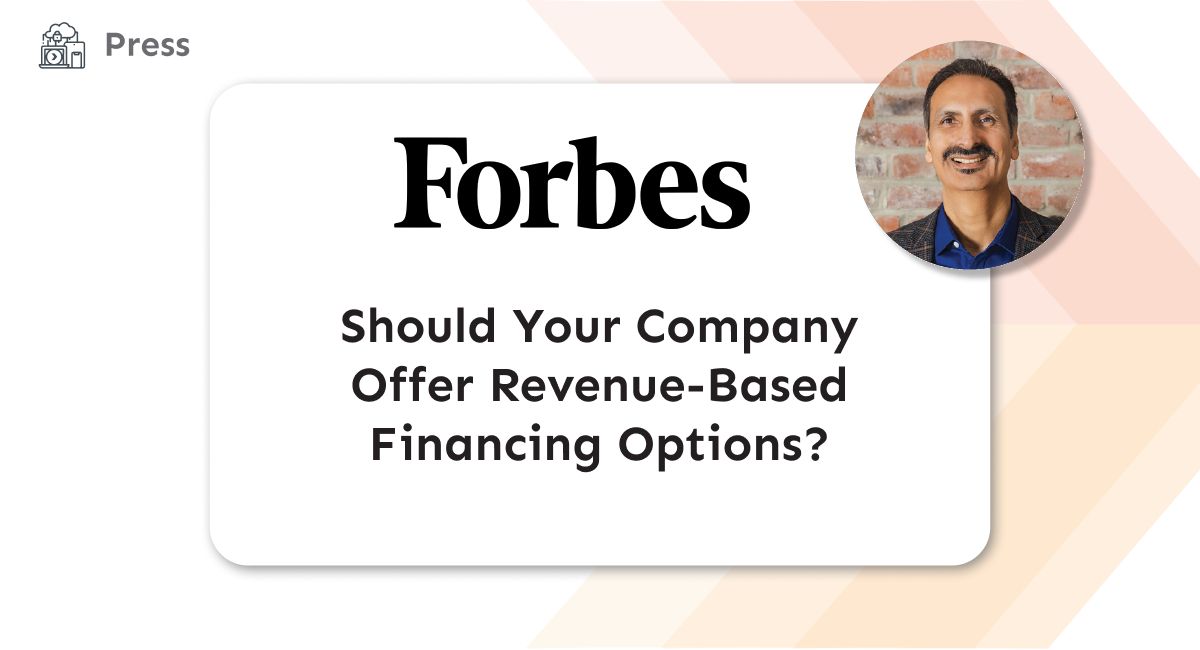This article, originally featured on Forbes.com in 2023, provides an updated perspective on the subject matter.
When it comes to small- to medium-sized businesses (SMBs), financing options are abundant, ranging from traditional to non-traditional lenders. They encompass a diverse array of choices, including equipment and inventory financing, business lines of credit, and merchant cash advances. However, in recent times, a series of impactful events like the Covid-19 pandemic, global supply chain disruptions, geopolitical tensions, inflation concerns, and talks of a looming recession have prompted both lenders and borrowers to lean toward more cautious financing alternatives, with a spotlight on revenue-based financing (RBF).
The surge of revenue-based financing (RBF) and its popularity
Revenue-based financing promises a percentage of a business’s future revenue to the financier until a fixed, predetermined amount is reached. This amount is often the value of the original loan, plus a flat fee. Clearco (formerly Clearbanc) co-founder and president Michele Romanow believes that in 2022, business leaders are likelier to choose RBF over traditional financing methods. Since 2005, there’s been a steady rise in revenue-based financing firms, with 32 U.S. firms managing a minimum of 57 distinct funds representing an estimated $4.31 billion in capital.
Although B2B software is the largest RBF borrower, revenue-based loans are becoming more popular with SMBs because they tend to have cheaper and more flexible repayment terms. Even if borrowers have a bad month, they won’t have a large repayment they can’t afford because they only owe a percentage of monthly revenue.
Revenue-based financing is also less costly than a lot of other financing options like debt and equity financing. SMB owners retain greater control and ownership, with no risk of collateral. On the flip side, lenders love revenue-based loans because they have the potential to produce substantial returns with relatively little risk—with some able to achieve profits of 20% even in a health and economic crisis like Covid-19. Moreover, both the financier and company have goal alignment to grow revenue, and funding can often be provided in as little as four weeks.
Expanding loan access with RBF: A solution for young SMBs
Revenue-Based Financing is a smart choice for young SMBs that have low credit scores, few assets and a small investor and venture capital network, all of which may reduce their access to traditional financing options. As such, RBF increases the number of loans available to businesses, increases a lender’s borrower rate, and allows lenders to provide more loans.
Lenders interested in adding revenue-based financing to their loan offerings to appeal to a wider SMB customer base can streamline the process by incorporating accounting data into their underwriting decisions. Accounting systems are a treasure trove of information for lenders, and accounting data paints a much more accurate picture of a borrower’s financial health. Using accounting data, lenders can determine:
- Good versus bad debt
- Average payment terms and days to pay
- Average invoice value
- Customers who pay on time versus those who don’t
- Paid versus outstanding invoices and costs
Challenges in utilizing accounting data for RBF
Lenders typically shy away from using accounting data for multiple reasons. Business customers may miss outstanding invoices, which makes it difficult to assess the company’s actual financial situation. Furthermore, PDFs and Excel sheets can easily be manipulated since accounting data is self-reported. They can also be outdated, especially if the SMB or start-up is in its growth stage. Lastly, not every small business is using cloud-based accounting software, so extracting accounting data in a ready-to-use format can be expensive.
Maximizing profits with RBF
Revenue-based financing can be highly profitable for lenders. It makes it easier for lenders to offer loans to businesses, select borrowers more efficiently, and serve more clients. Additionally, modern technology can assist lenders in providing RBF options, attracting a larger pool of qualified business customers. For companies looking to expand their lending services to small and medium-sized businesses, RBF is a smart and advantageous choice.
Originally published on Forbes.com. Updated for relevancy.
 Back to Blog
Back to Blog


